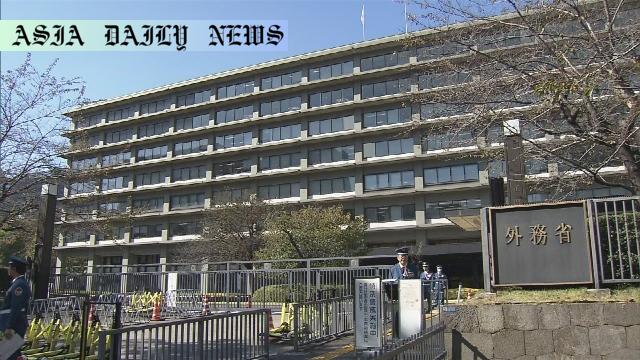East China Sea: Japan protests China’s installation of a 20th structure near median line, urging talks under 2008 agreement.
Japan protests China’s installation of its 20th gas field structure in the East China Sea.
Diplomatic talks between the two nations have stalled since 2008 despite previous agreements on joint development.
Japan calls for urgent resumption of negotiations under the 2008 Joint Development framework.

Introduction: Tensions in the East China Sea
The East China Sea has been a long-standing point of contention between Japan and China, with the latest developments further straining their complex relationship. On Tuesday, the Japanese Foreign Ministry issued a formal protest against China’s recent construction of a new structure near the median line separating the two nations’ territories. Reports suggest that this new installation is part of China’s ongoing unilateral development of gas fields in the region. This latest move has reignited tensions, compelling Japan to demand the immediate resumption of talks agreed upon in their 2008 joint development accord.
Historical Context: The 2008 Joint Development Agreement
In 2008, Japan and China reached an agreement to collaborate on the development of gas fields in the East China Sea. This agreement was intended to ease tensions and foster cooperative relations between the two nations. However, since then, negotiations have largely stalled, leaving unresolved disputes simmering under the surface. The geographical equidistance line, or the median line, serves as the unofficial boundary, and recent unilateral activities by China are perceived by Japan as a violation of the spirit of the 2008 accord. With no progress in diplomatic dialogues, each new structure China erects exacerbates the already fragile trust between the two countries.
Latest Developments and Regional Implications
The new structure being installed by China is the 20th of its kind, following the last recorded installation in May 2023. This continued activity underscores China’s interest in exploiting the region’s gas fields, even in the absence of joint negotiations. Such developments not only invoke criticism from Japan but also raise questions about maritime sovereignty and the region’s natural resource management. Tokyo has described the situation as ‘extremely regrettable’ and continues to call for direct talks under the 2008 agreement to de-escalate tensions and find a mutually beneficial resolution.
Why This Matters: Broader Implications
The dispute in the East China Sea is not merely a bilateral issue between Japan and China; it has broader implications for regional stability in Asia. With increasing competition for natural resources, the risk of conflict remains high, especially given the strategic importance of the East China Sea for trade and energy. Other nations, particularly those reliant on these waters for commerce, are closely monitoring developments. Japan’s protest reflects a broader anxiety over China’s growing assertiveness in the region, which also manifests in other territorial disputes across Asia, such as in the South China Sea.
The Path Forward: Calls for Diplomacy
While Japan has lodged a formal protest, the only sustainable resolution lies in the resumption of diplomatic talks. The 2008 agreement still serves as a viable framework for joint development, and both countries stand to gain significantly from renewed negotiations. For China, addressing Japan’s concerns could pave the way for improved regional relations, while Japan may find reassurance regarding its maritime sovereignty and access to resources. The international community also has a role to play in encouraging constructive dialogue to ensure stability in the region.
Commentary
Tensions Reflect Larger Regional Challenges
The current dispute in the East China Sea is emblematic of the larger geopolitical challenges facing East Asia. Both Japan and China have deep historical ties to the region, and the lack of resolution on fundamental disagreements, such as maritime boundaries and resource allocation, only complicates their relations. The continuing development of gas fields by China, regardless of Japan’s protests, also raises questions about the effectiveness of prior agreements and the willingness of both parties to adhere to them.
Unilateral Actions Undermine Trust
China’s unilateral development of the gas field structures sends a clear message about its approach to regional diplomacy—one that prioritizes its interests without waiting for mutual consensus. While this strategy may benefit China in the short term, it risks alienating neighboring countries and undermining trust. For Japan, such actions only deepen perceptions of insecurity, prompting protests and calls for international support. Without trust, the likelihood of successful negotiation diminishes significantly.
Looking Ahead: The Role of Diplomacy
Amid these tensions, diplomacy offers a way forward. The 2008 Joint Development Agreement demonstrates that cooperation is not only possible but mutually beneficial. Revisiting this framework could provide a foundation for progress. However, both countries need to demonstrate a genuine commitment to resolving disputes through dialogue rather than unilateral actions. Regional organizations and international intermediaries could also play a pivotal role in fostering constructive engagement between the two nations.


